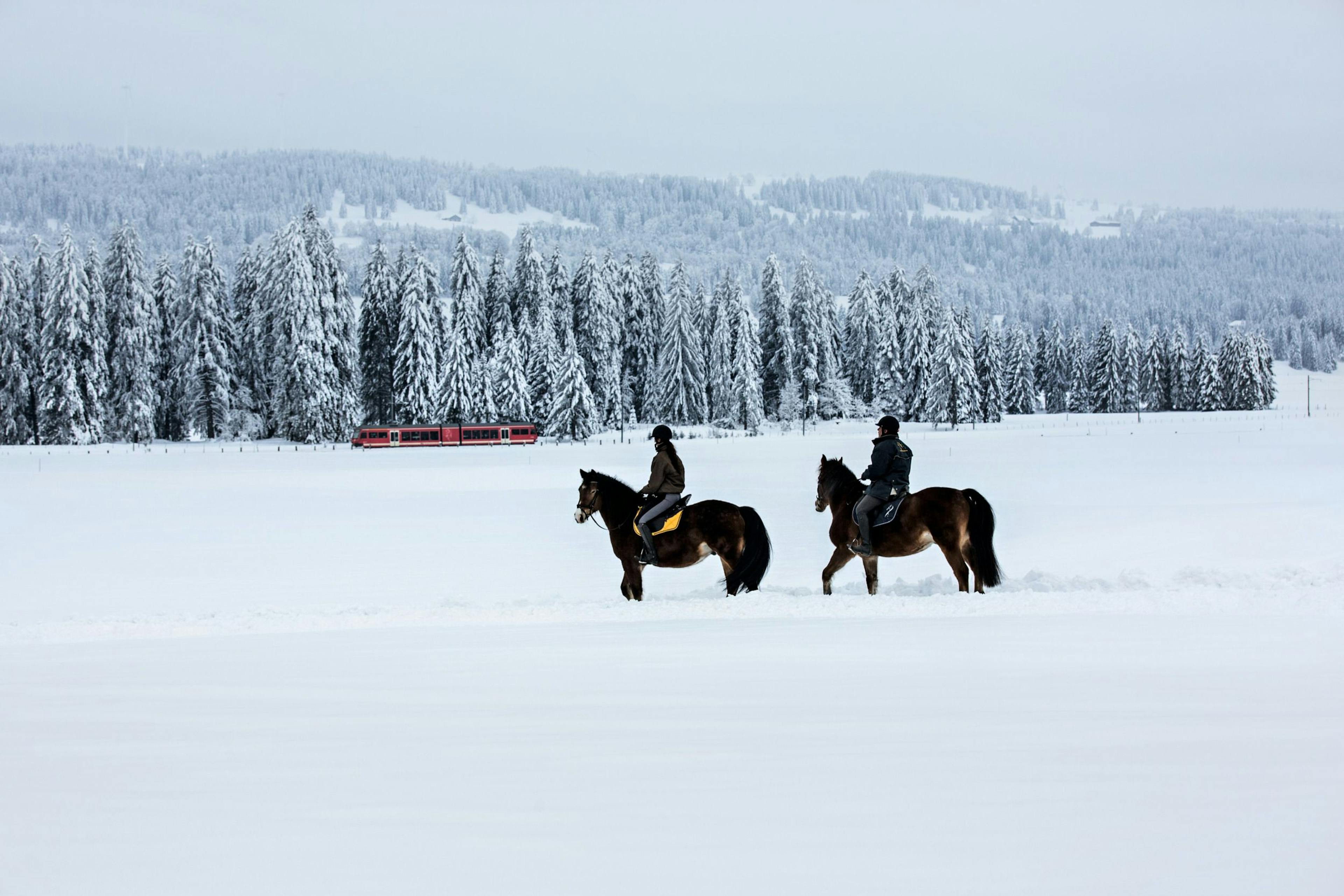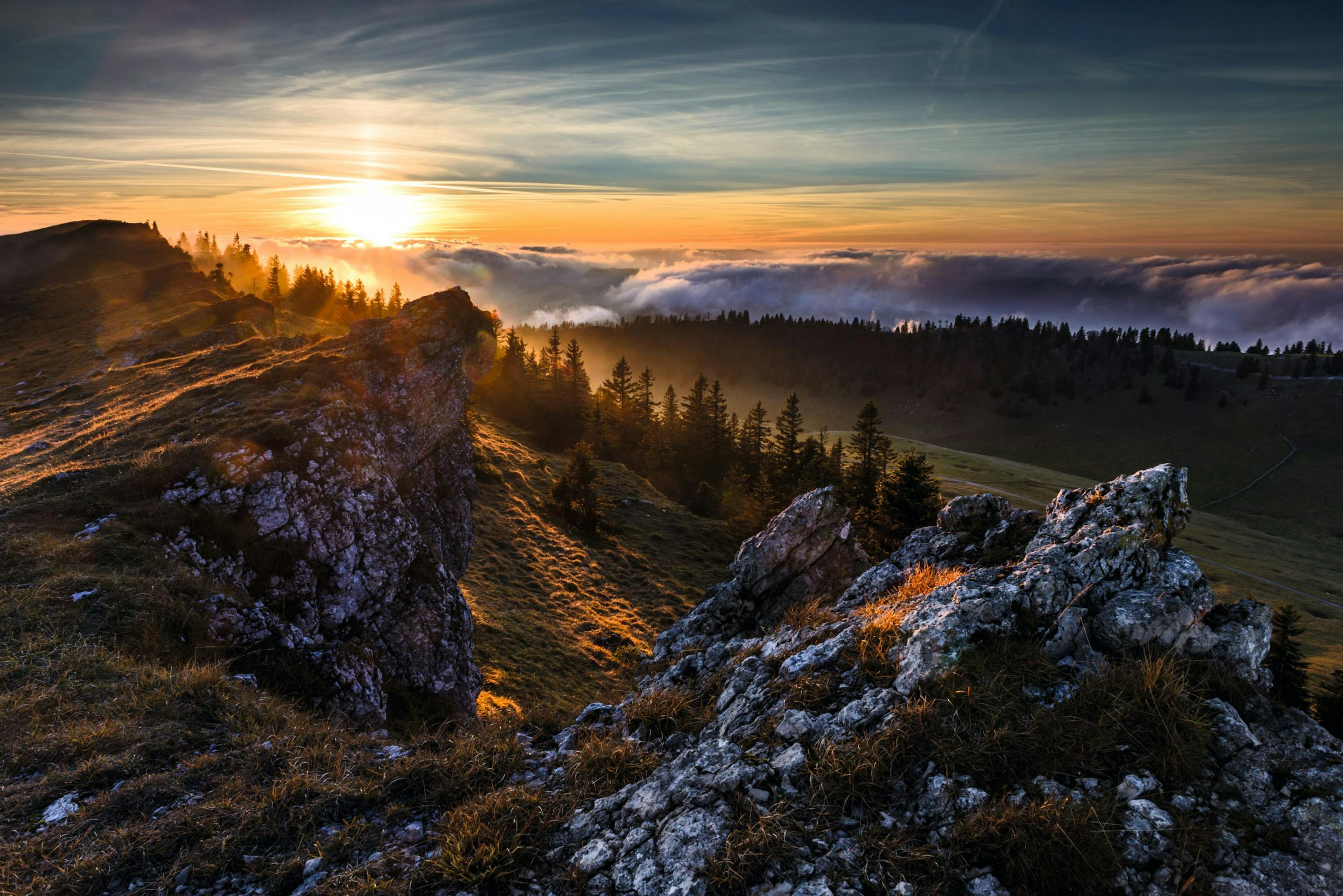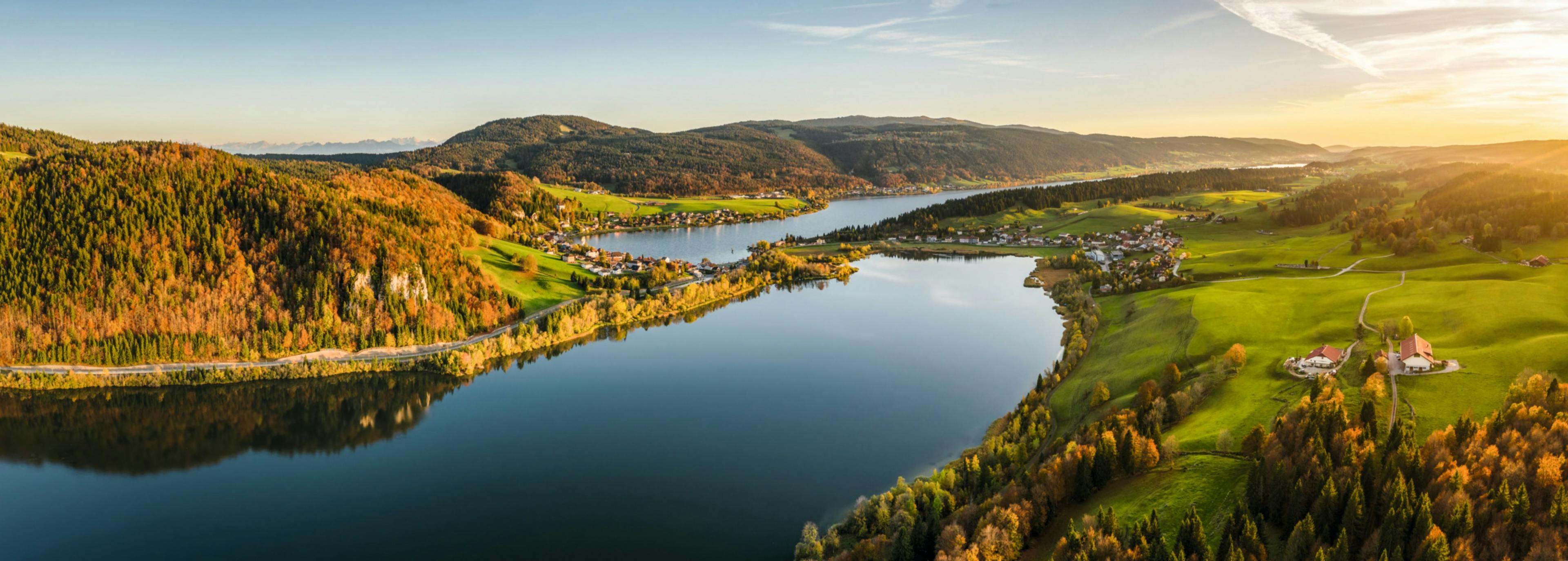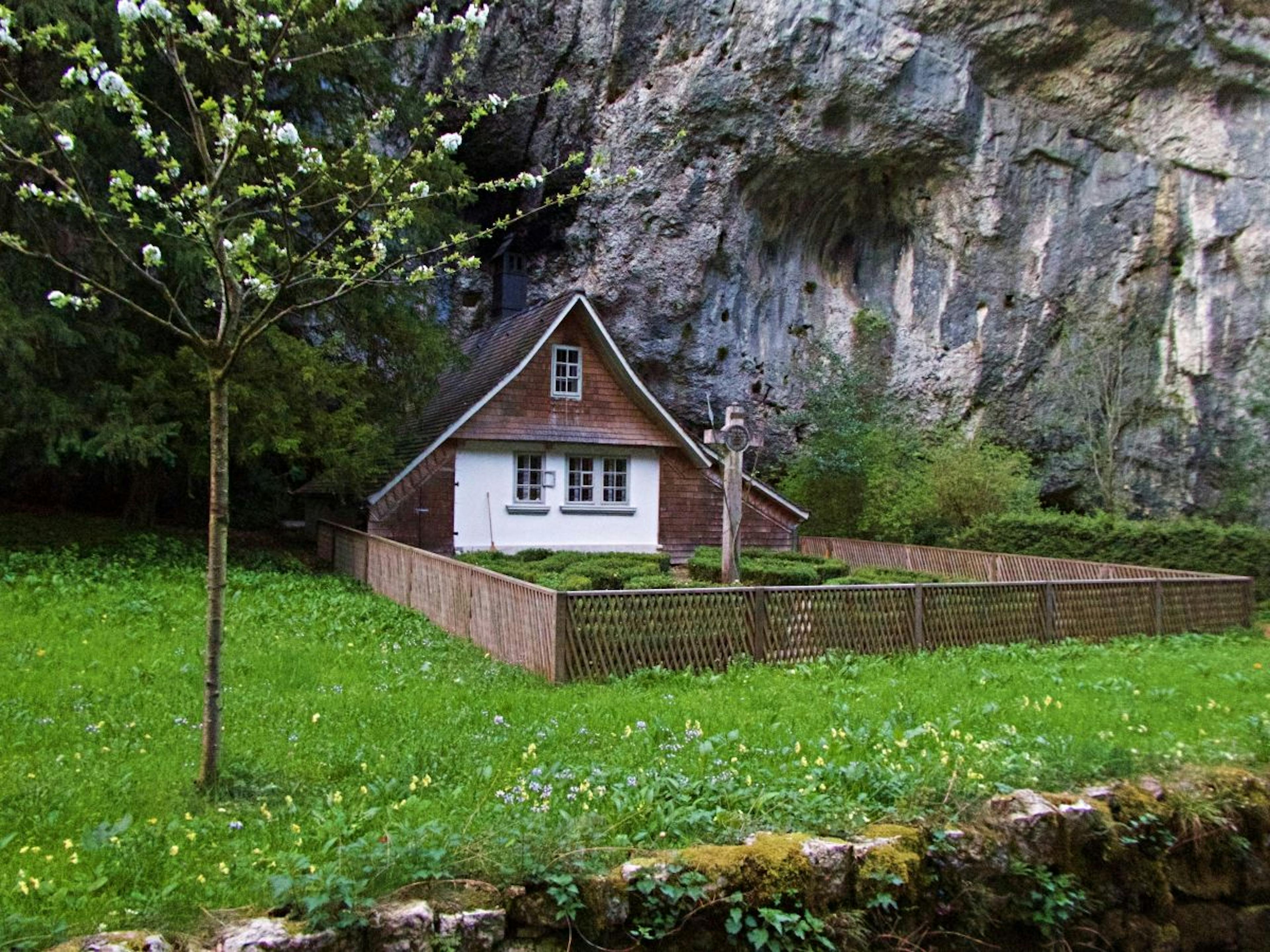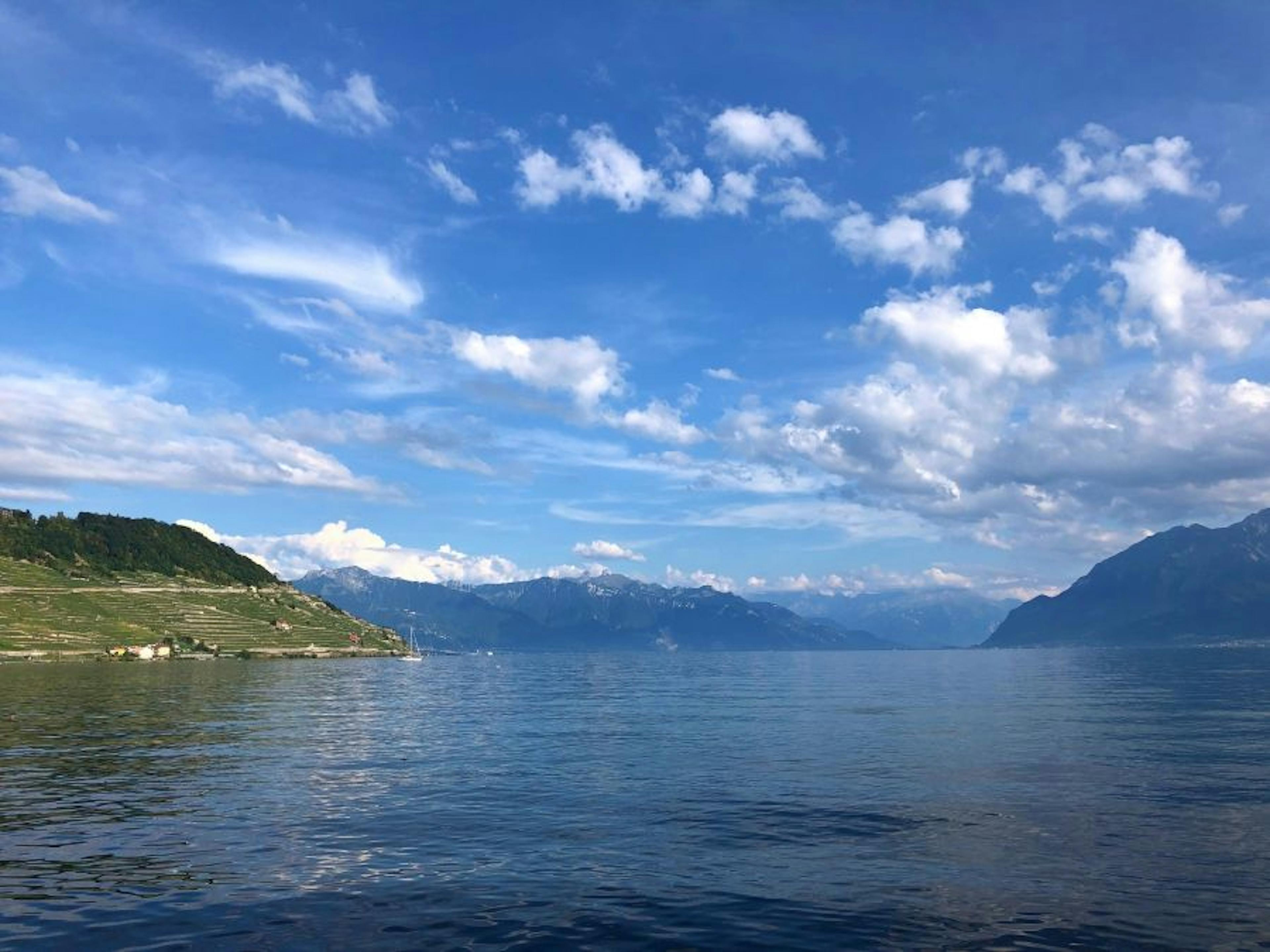8 Highlights in the Parc du Doubs
- The Saut du Doubs is an impressive waterfall fed by the Doubs River and is a breathtaking sight.
- Parc du Doubs is known for its abundant wildlife. This includes beavers, otters, wild boars, foxes, badgers, deer, roe deer, lynx and even wolves.
- The nature park is known for its picturesque landscape of rolling hills, dense forests, clear rivers and lakes.
- Historic sites such as the medieval town of Saint Ursanne are nestled in the picturesque landscape.
- In summer, the park offers numerous opportunities for swimming and picnicking on the banks of the Doubs.
- The Parc du Doubs is a popular destination for birdwatching, as the park is home to more than 150 different bird species. Among them are rare species such as the eagle owl or the little ringed plover.
- For nature lovers, the park offers guided hikes and field trips where visitors can learn more about the park's wildlife and plants.
- Pristine gorges with steep banks can be found along the Doubs River. They are popular with canoeists and fishermen. The nature park borders the Doubs River for 50 km.
You can find an overview of the nature parks in Switzerland in our article about the 20 most beautiful Swiss nature parks.
 Saignelegier See Gruere (Foto: Schweiz Tourismus, Martin Maegli)
Saignelegier See Gruere (Foto: Schweiz Tourismus, Martin Maegli)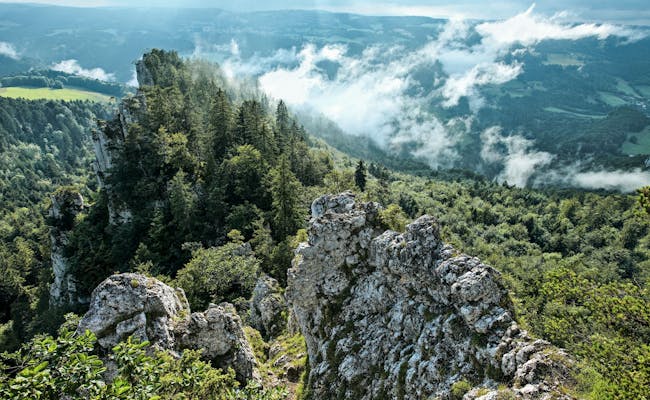 Muriaux (Foto: Schweiz Tourismus, Gerry Nitsch)
Muriaux (Foto: Schweiz Tourismus, Gerry Nitsch)What awaits you in the Parc du Doubs
The Doubs River characterizes the northern part of the nature park and is responsible for its naming. At the same time, the river forms the border with France north of the Jura Mountains.
The Parc du Doubs covers an area of more than 300 km². It stretches from the French border in the north to the plateau of the Franches-Montagnes in the south. It is bordered to the west by Les Brenets (canton of Neuchâtel) and to the east by the medieval town of Saint Ursanne (canton of Jura). In the north, the nature park extends far into French territory and thus has a cross-border character. Even the famous waterfall is half on French territory.
Extensive forests and wooded pastures characterize the cultural landscape. Horse breeding has characterized the region for centuries, which is also known for its cattle breeding. Almost 60,000 people have settled in the area of the nature park and now also live from nature-based tourism.
Also worth mentioning is the importance of the two watchmaking towns of La Chaux-de-Fonds and Le Locle. They are both located in close proximity to the park. They have a long tradition of watchmaking and have been known worldwide for their precision watch movements since the 19th century. In 2009, the two cities were declared World Heritage Sites by UNESCO.
With its deep gorges, rolling hills and rushing waterfalls, the Parc de Doubs is an unforgettable experience for nature lovers and adventurers. In addition, there are medieval villages, plateaus with stone walls and pastoral landscapes with the aforementioned horse pastures. But also moor lakes and rough Jura rocks are part of it. Here you can relax and escape from the hustle and bustle of everyday life while enjoying the beauty and tranquility of nature.
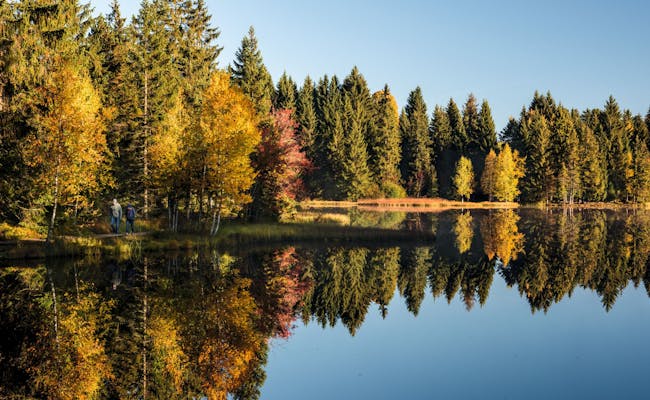 Saignelegier See Gruere (Foto: Schweiz Tourismus, Martin Maegli)
Saignelegier See Gruere (Foto: Schweiz Tourismus, Martin Maegli) Saint-Brais (Foto: Schweiz Tourismus, Markus Buehler-Rasom)
Saint-Brais (Foto: Schweiz Tourismus, Markus Buehler-Rasom)How best to explore the Parc du Doubs
The park offers a wealth of opportunities to enjoy nature. You can go hiking, biking, fishing and boating here.
Apart from these common ways of getting around, here comes another important point. If you have always wanted to get on a horse and go for a long ride, this is the place for you. You can also visit various horse farms and learn more about the local Freiberger.
By the way, up to 5000 horses graze here in summer. However, since they can move freely, they are not always in the same places. The organization "Horses in the Jura" has created an interactive map that allows you to find the current location of various herds.
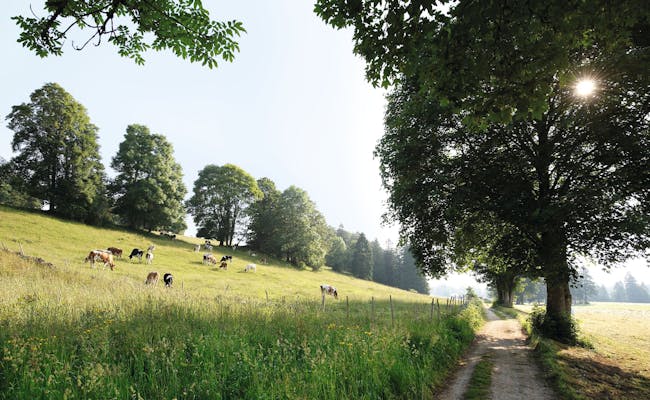 Les Cerlatez (Foto: Schweiz Tourismus, Gerry Nitsch)
Les Cerlatez (Foto: Schweiz Tourismus, Gerry Nitsch)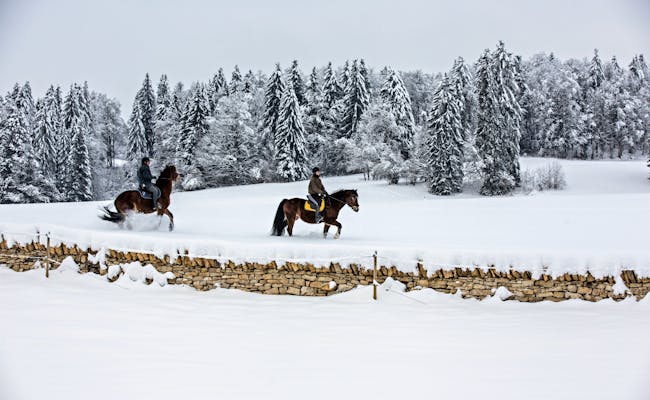 La Chaux des Breuleux (Foto: Schweiz Tourismus, BAFU: Marcus Gyger)
La Chaux des Breuleux (Foto: Schweiz Tourismus, BAFU: Marcus Gyger)But also for everyone else there is a lot to experience in the Parc du Doubs.
Here are some examples of activities in the Parc du Doubs
- Circular hike from Les Brenets to the Saut du Doubs waterfall: the 27 m high waterfall is an absolute highlight on this easy hike. 8.2 km length, 3 hrs., 400 m altitude difference
- Circumnavigation of Etang de Gruere: The path around the pond near Saignelégier is easy to walk, dogs are also allowed here. 2.4 km, 35 min, 49 vertical meters.
- Hike from Le Noirmont towards Le Creux de Gros Gipoux: The moderate hike leads to the Ruine de Spiegelberg and back. 15.1 km, 5.5 hrs, 831 vertical meters.
- Canoe and kayak trips on the Doubs River between Goumois and St. Ursanne: They are very romantic and relaxing.
- Boat trip on the Lac de Brenets: excursion boats operate from spring to autumn
- Cycling along the Doubs river from Soubey to St. Ursanne. This route of about 20 km takes about 1-2 hours.
- Fishing along the Doubs River: There are many fishing spots along the river, including the Lac des Brenets lake.
- Bird watching: The Parc du Doubs is an important habitat for many bird species, including the black stork. A recommended site for bird watching is the bog lake Étang de la Gruère. The best time for this is in the early morning hours.
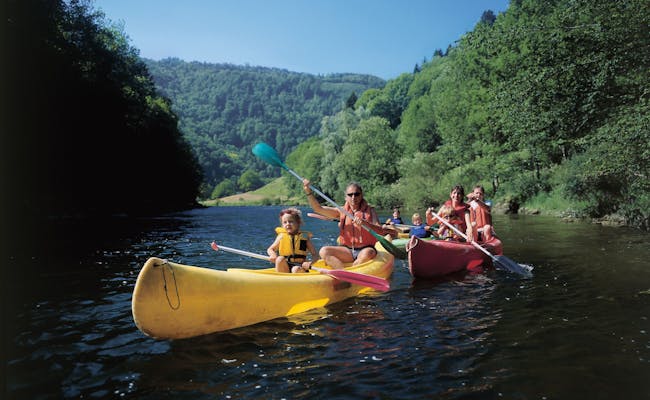 Canyoning (Foto: Schweiz Tourismus, Christof Sonderegger)
Canyoning (Foto: Schweiz Tourismus, Christof Sonderegger) Montmelon eBiker Doubs Ebene (Foto: Schweiz Tourismus)
Montmelon eBiker Doubs Ebene (Foto: Schweiz Tourismus)- The famous Bicycle Route Verte starts in its fourth stage in St-Ursanne on the Doubs. It overcomes a few meters of altitude before passing through the vastness of the Franches-Montagnes.
- On the ridge walk to the Sommêtres, you'll pass a climber's paradise and rugged limestone cliffs.
- The rock arena of the Creux de Moron offers a spectacular view of the Doubs. You reach it not far from the town of Le Locle high above the Lac de Moron over a steep rock cliff.
 Les Brenets (Foto: Schweiz Tourismus, M.Senn)
Les Brenets (Foto: Schweiz Tourismus, M.Senn)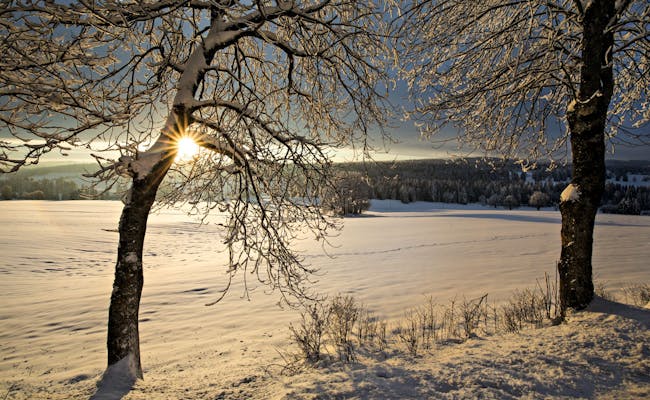 Montfaucon (Foto: Schweiz Tourismus, BAFU:Marcus Gyger)
Montfaucon (Foto: Schweiz Tourismus, BAFU:Marcus Gyger)How to reach the Parc du Doubs
You can reach the Parc du Doubs by public transport, but not as easily as for example the Jurapark Aargau. If you have a little more time, this is not a serious problem.
The cities of La Chaux-de-Fonds, Le Locle and St. Ursanne are on the SBB network and various villages in the Franches-Montagnes can be reached by train. Buses and cable cars also provide access to the park.
For example, a narrow-gauge railroad operated by Transports Publics Neuchâtelois runs from Le Locle to Les Brenets. A cable car from Saint-Imier to Mont-Soleil can also be used for excursions to the neighboring Parc du Doubs.
By car, for example, you can travel via the A16 or A5 and head for the park entrance at Les Brenets. From Basel you need about one hour via the A18 and the D430 to Les Brenets. From Neuchatel it takes about 40 minutes by car via the A5 and the D437. There are several parking lots in the park from where you can explore the park on foot or by bike.
A visit to the Parc du Doubs is especially worthwhile for nature lovers, horse enthusiasts and hiking enthusiasts. It offers a variety of activities and attractions throughout the year, making it an ideal destination.
 Saint-Ursanne Doubs-Bridge (Foto: Schweiz Tourismus, Ivo Scholz)
Saint-Ursanne Doubs-Bridge (Foto: Schweiz Tourismus, Ivo Scholz)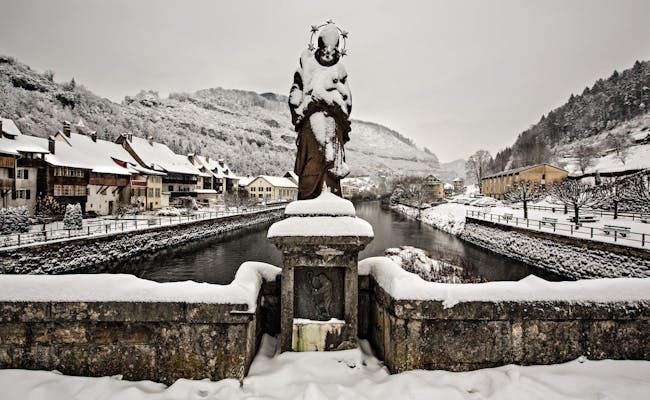 Saint-Ursanne (Foto: Schweiz Tourismus, , BAFU:Marcus Gyger
Saint-Ursanne (Foto: Schweiz Tourismus, , BAFU:Marcus Gyger